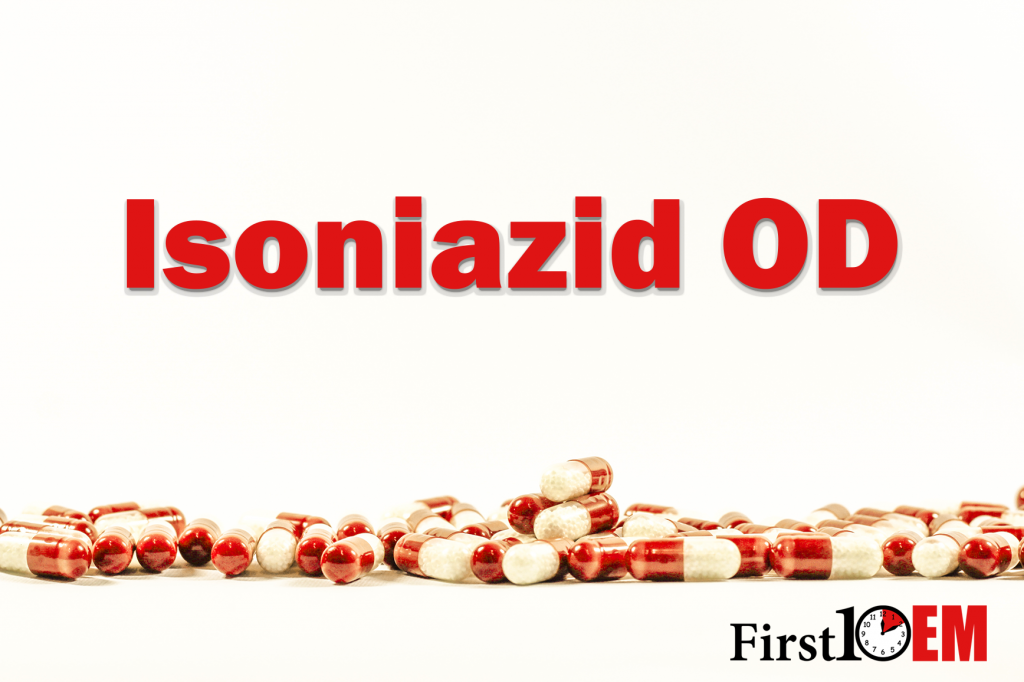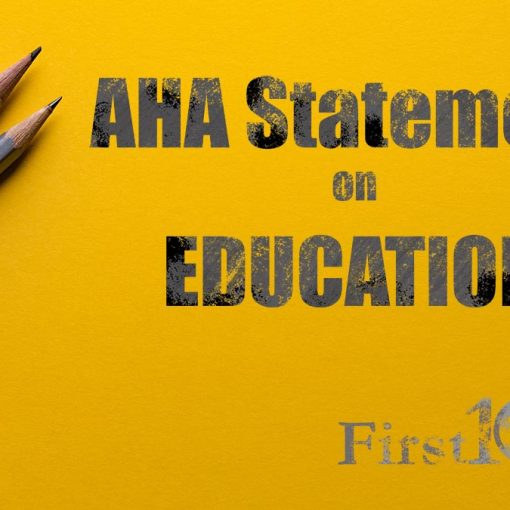Case
You get a patch from an EMS crew on route with a 3 year old boy in status epilepticus, with 5 minutes of tonic clonic seizure activity unresponsive to the first dose of midazolam. You gather your team and perform a quick pre-brief, reviewing everyone’s expected role, the algorithm you will follow, and the anticipated pediatric doses. You gather all the necessary pediatric equipment and have the broselow tape ready. You are feeling very confident, but when paramedics role through the door, you encounter a mother screaming about her child being poisoned. Apparently grandma is being treated for tuberculosis, and the pills were all over the ground. Could this be an isoniazid overdose? The child is still in an active tonic-clonic seizure as the paramedics transfer him to the resuscitation bay stretcher…
My approach
The initial management of this child is status epilepticus should follow your normal approach to seizures. Address the ABCs, check the sugar, and give benzodiazepines. Get IV access, or if not successful after 2 attempts, place an IO.
Benzodiazepines
My first medication given would still be midazolam (0.1mg/kg IV or 0.2mg/kg intranasal or IM). I would also still follow my normal status epilepticus algorithm of benzodiazepine, benzodiazepine, propofol, intubation. However, as soon as possible into the resuscication, I will get the antidote on board:
Pyridoxine
The antidote for isoniazid is pyridoxine. If there is a suspicion that status epilepticus could be the result of isoniazid toxicity, pyridoxine should be given as soon as possible. However, pyridoxine, especially in the doses required, will take time to get and give. I want it on board as soon as possible, but terminating the seizure and managing the ABCs is still my priority.
-
- The initial dose should be 1 gram of pyridoxine for every 1 gram of isoniazid ingested (max 5 grams or 70mg/kg in children). This dose can be repeated if necessary
-
- If the ingested quantity of isoniazid is unknown, give 5 grams (1 gram/kg in children up to a max of 5 grams)
-
- Give as a slow infusion of 0.5 grams/min until the seizure stops
-
- Don’t be confused about the dose. It only comes in 50mg vials, so you are going to need A LOT of vials to give the recommended dose
- Getting enough pyridoxine might be a problem. Some sources say that if the intravenous version is not available, you should give it as a slurry using crushed pills at the same dose.
Elimination
Isoniazid is absorbed by activated charcoal. If I have intubated the patient and the history was of an acute ingestion (within the last hour or so), I will give charcoal 1-2 grams/kg. Although isoniazid is dialyzable, dialysis is not recommended because it takes too long.
Finally, before handing the patient over to the pediatric ICU, I remind myself to consider co-ingestions, as well as non-toxicologic diagnoses. Unless the history is perfectly clear (which it never is in the first 10 minutes of resuscitation) I would have a hard time not giving a child in status empiric antibiotics.
Notes
In an overdose, isoniazid toxicity is rapid and fairly predictable. Of course, doses are never precise in toxicology, but estimates of the severity of ingestion can be made:
-
- >1.5grams (20mg/kg) – patient may become symptomatic
-
- >3 grams (40mg/kg) – anticipate seizures, coma, and metabolic acidosis
- >10 grams (130mg/kg) – lethal without treatment
Aside from seizures, common symptoms of isoniazid toxicity are dizziness, blurred vision, nausea, vomiting, tachycardia, ataxia, hyperreflexia, and altered mental status. Of course, isoniazid is one of the classic ‘mud piles’ causes of an anion gap metabolic acidosis. I never have labs back in the first 10 minutes, so it does not impact my resuscitation, but if you have a seizing or altered child without a clear etiology, and the labs reveal an anion gap acidosis, the diagnosis should be considered.
The nerdy biochem stuff: Pyridoxine is necessary cofactor in the production of GABA, the major inhibitory neurotransmitter in the CNS. (GABA’s effects are evident if you remember that benzodiazepines, barbituates, propofol, and inhaled anesthetics all act as GABA agonists). Isoniazid combines with pyridoxine, making pyridoxine inactive, lowering brain levels of GABA and increasing susceptibility to seizures.
Other FOAMed Resources for Isoniazid Overdose
Isoniazid toxicity (Critical Care Compendium) on Life in the Fastlane
Isoniazid, seizures, and pyridoxine on The Poison Review
References
Romero JA, Kuczler FJ. Isoniazid overdose: recognition and management. American family physician. 57(4):749-52. 1998. PMID: 9490997 [free full text]
Sharma AN, Hoffman RJ. Toxin-related seizures. Emergency medicine clinics of North America. 29(1):125-39. 2011. PMID: 21109109
Morrow LE, Wear RE, Schuller D, Malesker M. Acute isoniazid toxicity and the need for adequate pyridoxine supplies. Pharmacotherapy. 26(10):1529-32. 2006. PMID: 16999664
Morgenstern, J. Isoniazid overdose, First10EM, May 16, 2016. Available at:
https://doi.org/10.51684/FIRS.2078







One thought on “Isoniazid overdose”